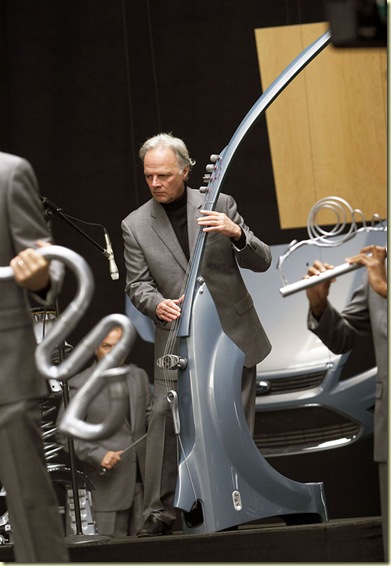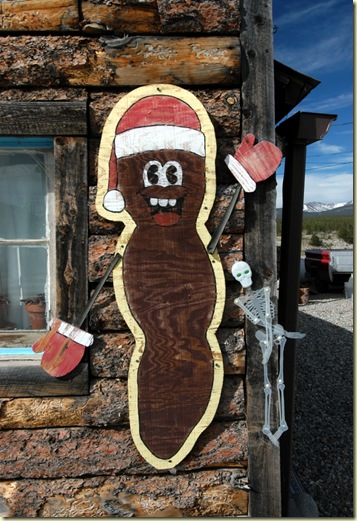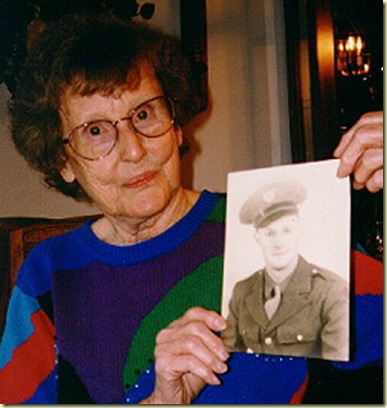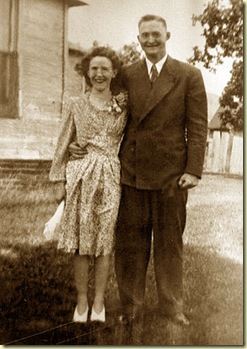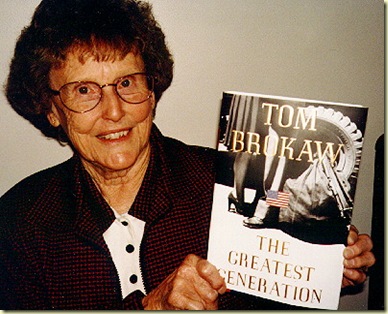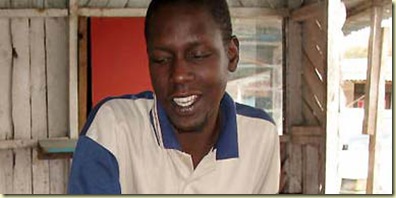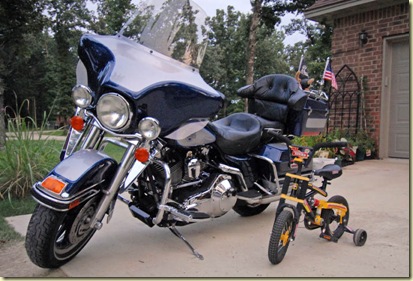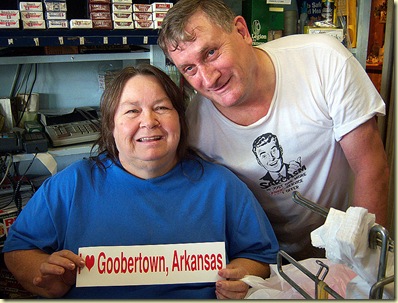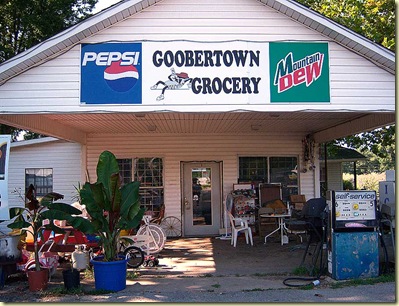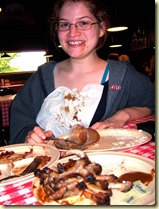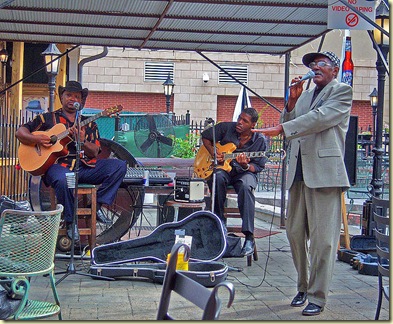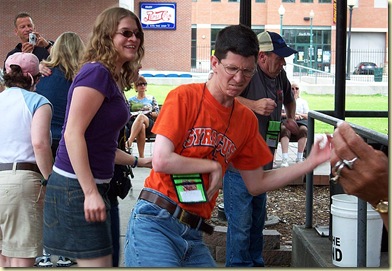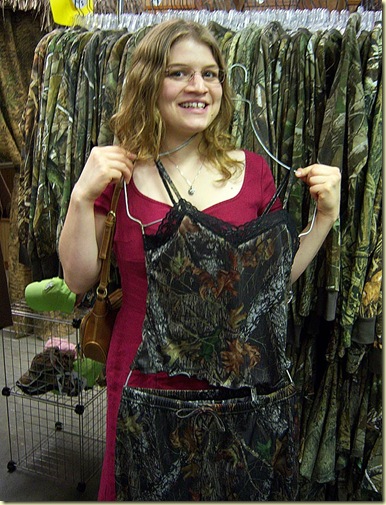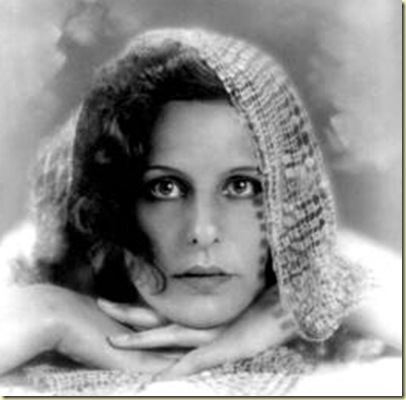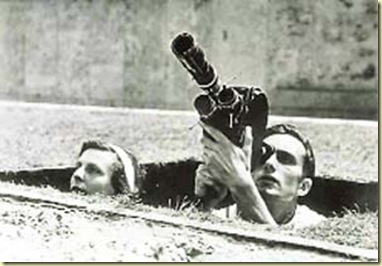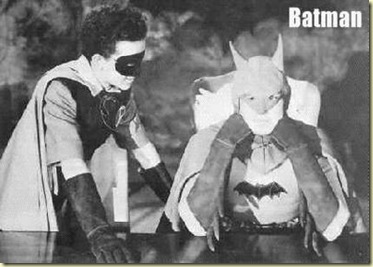The dark mutterings of a former mild-mannered reporter for a large metropolitan daily newspaper, now living in obscurity in central Indiana.
Sunday, August 31, 2008
Fender bass
Ford has a commercial airing in England featuring a 31-piece orchestra with instruments made from parts of a couple of five-door Ford Focuses.
They include such things as a rear suspension spike fiddle and a door harp and, of course, the fender bass pictured above.
Mister Hanky at home in South Park
Mister Hanky, the Christmas Poo from the South Park TV series decorates a building at the west end of Front Street in Fairplay, Colo.
Saturday, August 30, 2008
Friday, August 29, 2008
Remembering the Greatest Generation
This story appeared in the Metro North section of The Indianapolis News and The Indianapolis Star the day before Valentine's Day, 1998.
Killed in France in 1944, Raymond Kelley
Still Takes Care Of His Bride
Daphne Cavin with a photo of first husband Raymond Kelley, killed in France in World War II.
By John M. Flora
STAFF WRITER
LEBANON, Ind. – “This is a love story,” said Daphne Cavin with a smile as she swung open the big photo album on her daughter's dining room table.
With aging black-and-white snapshots and other mementos Scotch taped to its black pages, the album is the 78-year-old Lebanon woman's fondest keepsake of her first love and a Boone County boy who died in France more than half a century ago.
Daphne was 21 and Raymond Kelley was 19 when mutual friend Mamie Gates introduced them at a Sunday school party in August of 1941.
Daphne was a beautician in Lebanon at the time and Raymond was working for Kingan Meat Co. in Indianapolis. They began dating and seeing more of each other.
Raymond was visiting at her parents' home just south of Lebanon on Old U.S. 52 on Sunday, Dec. 7, 1941, when news came over the radio about the Japanese attack on Pearl Harbor. “I was sitting on his lap and he pushed me off and ran into the kitchen to tell my mother,” she recalled.
Despite an uncertain wartime future, Daphne and Raymond were married the next June at her parents' house.
Daphne and Raymond's wedding photo.
“It was a windy day,” she said, pointing to a photo of the slightly windblown, but happy couple in the front yard of the farmhouse.
On the next page were photos of Daphne and Raymond and some of her nieces and nephews from Kansas, gathered at the family home for a reunion a few months into their marriage.
Raymond's draft notice arrived Oct. 26 and a short time later he left for training at Camp Shelby near Hattiesburg, Miss.
“I went down and visited him over Christmas and went back at Eastertime,” she said, pointing to snapshots from those happy times. “We stayed at the Methodist parsonage and I remember we stood up with another couple who got married – the girl was from New York.”
Raymond's training took him to California for desert maneuvers in the spring of 1943, but he managed to get home for an 11-day furlough in June. In true Army fashion, as soon as he returned to his post in California he was transferred to Trenton, N.J.
Daphne visited Raymond in Trenton before he shipped out for North Africa. From there, his unit participated in the Allied invasion of Italy, going ashore at Anzio.
“Raymond was wounded by a land mine at Anzio,” she said, turning a page to reveal a small yellow pennant with a crude black skull and crossbones. The marker was a souvenir of the German mine that sent Raymond home from March to June, 1944, with a shoulder wound.
By August, Raymond was back with his 45th Infantry Division buddies for an Allied invasion of southern France.
On September 10, the day before troops from this southern spearhead linked up with their comrades fighting east from the beaches of Normandy, Raymond was killed. He was fatally wounded as his unit prepared to take the French town of Mancrenans.
Daphne said she learned a piece of German shrapnel was deflected by an overhead tree branch and pierced his heart, killing him instantly.
About three weeks later, Daphne recalled, she was notified he was missing. A short time after that, she was at her sister's home when Baptist Pastor Larue Jensen came to the door with word that Raymond was dead.
“I looked up and I knew then what had happened,” she said, recalling how Rev. Jensen refused to make any more death notifications – Raymond Kelley's being his third in a month.
“The Red Cross took it over after that,” she said.
Tucked into the black pages were the contents of Raymond's wallet the day he was killed. There was a picture of Daphne, his Indiana driver's license, his Social Security card, a poem Daphne had sent him titled “When you Come Home” and a lock of bright red hair.
“That's my hair,” she said, acknowledging her hair color today is brown with flecks of gray. And there, along with Raymond's red-and-gold 45th Division Thunderbird patch and his blue-and-silver combat infantryman's badge is the Western Union telegram every soldier's wife and parents dreaded most. The lines of teletyped text, hammered out on paper tape and pasted to the yellowing telegram form, intoned, “The Secretary of War asks that I assure you of his deepest sympathy in the loss of your husband, Private First Class Raymond R. Kelley, who was previously reported missing in action. Report now states he was killed in action on ten September in France...”
When she learned the date of her husband's death, Daphne suddenly remembered a dream she'd had about that time. Raymond came to her in the dream, she said, and without speaking, took her into his arms.
“I can remember feeling his hands on my back,” she said, recalling how her husband seemed to want to comfort and reassure her. “He looked so well in that dream,” she said. “I didn't think about it too much until later... I'm not one to believe in visions, but I really do believe things like this happen sometimes.”
Raymond was buried in an expansive Allied cemetery at Epinal. A group of French students from Zionsville Middle School visited his grave last June and held a brief memorial service there on the grassy plateau 100 feet above the Moselle River. They brought back photos of the site for Daphne's album.
Supported by Raymond's survivor's benefits and her beautician's earnings, Daphne lived alone until 1950 when she married Marvin Cavin, a rural Boone County farmer.
When she married Marvin, Daphne gave the scrap book to her sister, lest her new husband think she was pining for Raymond.
“I also gave her my first wedding ring,” she said. “I thought I could just forget the past and go ahead.”
“I'm sure I cared for Raymond just as much as I did for Marvin and I think Marvin sensed that. I remember he said, ‘One person can never take another person's place, but they make a place of their own.’ I think that was very wise.”
The Cavins had four children – Janie, twins Oren and Loren and Nancy. Marvin gave up on farming in the mid-1960s and went to work for the Boone County Farm Bureau Co-Op.
Daphne concedes “I might have made a mistake not telling my children much about Raymond, but I didn't want it rubbed in on my children. I didn't talk to them about it because of their feelings for their dad.
“He was a very good father and a very good husband and I cared for him just as much.”
Daughter Janie Strawmyer remembers wondering about her mother's first marriage.
“We were inquisitive and I suppose we would have asked more about it, but I guess we felt it was something she didn't want to talk about... that it was too painful for her to talk about,” she said
In 1974, as the Cavins were beginning to think about retirement, Marvin was diagnosed with cancer. He died the following March.
“I would have loved to have been able to retire with him,” Daphne said. “It was a big disappointment, but I was disappointed when no one came home from the war, too.”
Soon after Marvin died, Daphne's sister returned the album of mementos of her her first marriage.
“It was hard when she brought it back, yet it opened up a lot of memories for me that I had buried,” she said. “We put on a lot of false gaiety during the war.”
Also a World War II veteran, Marvin Cavin was never sent overseas. An acquaintance with the Disabled American Veterans, who attended Marvin's funeral, learned about Daphne's earlier marriage to Raymond and suggested she might now be eligible again for Raymond's survivor's benefits.
“I could hardly believe it. There I was at the age of 55 having to make my own living again. It started out at about $200 a month and now it's up to $833 a month. It was like manna from Heaven,” she said.
Daphne now lives with daughter Nancy Freshour on Lebanon's northside, supported by Social Security from her own labors and Marvin's as well as Raymond's survivor benefits.
“I guess you could say that Raymond is still taking care of me after all of these years,” she said, caressing the faded portrait of the young soldier.
“He would be 75 now, but he was 22 when he was killed and that's how I think of him.”
+++++++++++++++++++++++++++++++++++++++++++++++++++++++
Thousands More War Widows
May Be Entitled To Benefits
By John Flora
STAFF WRITER
Veterans' affairs experts say there may be thousands of widows who are unknowingly entitled to the same benefits Daphne Cavin is collecting.
“We don't have any hard and fast numbers,” said Phil Budahn, a spokesman for the American Legion in Washington, D.C., “but anecdotally, there is plenty of evidence to suggest this is something people are not aware of.”
Budhan emphasized that survivor benefits are paid to survivors of military personnel who die on active duty or as a direct result of an injury associated with service. That also includes reservists and National Guardsmen who are injured during active service. Likewise, he said, dependency and indemnity compensation is available to children under 18 and any child – including a service man or woman's adult child who has a disability that makes them incapable of self-support, so long as the disability developed before the child's 18th birthday.
Rick Randle, public information with the Department of Veterans Affairs Regional Office in Indianapolis, agreed Daphne's experience is not uncommon.
“I think a lot of people, once they re-marry, believe they are no longer entitled to any benefits, but they do not know that if their spouse dies or they get a divorce, they can reapply for the benefits,” Randle said.
Budhan said a movement in the late 1980s to tighten survivor benefits resulted in a ruling that the widow's second marriage must have ended by Nov. 5, 1990, to have benefits re-instated.
“This is something the Legion opposes,” he said.
“We have fought to reinstate the old rules, but widows and widowers should be aware they will lose benefits if they re-marry.”
Randle said there are 7,985 widows of U.S. wars living in Indiana.
“The bottom line for veterans and their families and survivors,” Budhan said, “is to recognize that Veterans Administration benefits are a legal maze and they shouldn't try to find their way through that by themselves.
“There are organizations like the American Legion who have trained professionals who offer free help to any veteran or spouse of asks,” he said, noting that most Indiana counties have a veterans service officer available to help sort out benefit problems.
NBC Nightly News producer Eric Wishnie waits as sound man Johnny Scott clips a microphone to Daphne's collar. Wishnie, Scott and cameraman Mike Stephen traveled to Lebanon, Ind., May 19 to include Daphne in Tom Brokaw's Home of the Brave series on Nightly News. It aired May 22, 1998.
This story appeared in the May 22, 1998 Metro North section of The Star & The News
By John M. Flora
STAFF WRITER
LEBANON, Ind. – Daphne Cavin's story of young love cut short by World War II will be featured on NBC Nightly News tonight.
Daphne was married just 26 months when her young husband, Raymond Kelley, died in combat in France in September 1944.
The 78-year-old Lebanon woman shared her scrapbook, memories and heartbreak with a reporter from The Star & The News for a story published in the Feb. 13 Metro North section of the papers.
A few weeks ago, that story came to the attention of Eric Wishnie, a producer for NBC Nightly News in New York.
Wishnie had been assigned by Nightly News anchor Tom Brokaw to find stories about the generation of Americans who came of age during World War II.
Using Lexis-Nexis, an electronic information service that accesses newspaper and magazine archives and other databases, Wishnie discovered Daphne's story and was charmed by it.
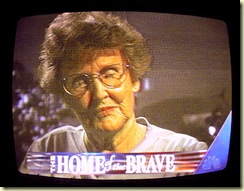 It was also the perfect story to dovetail with Friday's scheduled dedication of a monument to World War II veterans in downtown Indianapolis. The ceremonies, which are part of the 500 Festival Memorial Service, will be attended by former presidential candidate and disabled World War II veteran Bob Dole and Gov. Frank O'Bannon.
It was also the perfect story to dovetail with Friday's scheduled dedication of a monument to World War II veterans in downtown Indianapolis. The ceremonies, which are part of the 500 Festival Memorial Service, will be attended by former presidential candidate and disabled World War II veteran Bob Dole and Gov. Frank O'Bannon.
Wishnie and an NBC crew came to Lebanon Tuesday to interview Daphne for a segment to be narrated by Brokaw. Brokaw will be at the services Friday and will meet Daphne, her children and grandchildren.
“In the last 18 months or so, Nightly News has done about a dozen stories on the World War II generation,” Wishnie explained. “The idea is that this generation built America into what it is today and they never whined about what they had to go through. Now they're getting a little older and we don't pay enough mind to them...
“We don't spend enough time talking about the sacrifices people made who didn't go off to war – not just the worries they had about their spouses, but raising children on their own and working to keep up,” he said.
So, as NBC cameraman Mike Stephen and sound man Johnny Scott recorded the scene, Daphne spent much of Tuesday remembering what it was like to have a marriage with a young soldier – stealing a few days here and there during leaves and furloughs before he was shipped overseas.
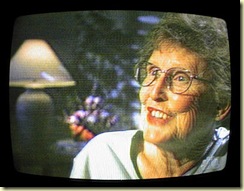 She lovingly showed the black-and-white photos of their wedding and their happy times together and she pointed with pride to Raymond's uniform patches combat infantryman's badge. And she sadly unfolded the brittle one-page Western Union telegram that carried the news of Raymond's death in France.
She lovingly showed the black-and-white photos of their wedding and their happy times together and she pointed with pride to Raymond's uniform patches combat infantryman's badge. And she sadly unfolded the brittle one-page Western Union telegram that carried the news of Raymond's death in France.
Daphne and Raymond had no children. She married Marvin Cavin, a Boone County farmer, in 1950, and they had two daughters and twin sons. In 1974, when Cavin was beginning to think about retirement from the Boone County Farm Bureau Co-op, he was diagnosed with cancer. He died less than a year later.
“I would have loved to have been able to retire with him,”' Daphne said. “It was a big disappointment. But I was disappointed when no one came home from the war, too.”
Wishnie, whose job it is to piece together the three-minute segment he expects will air at the end of tonight's newscast, said Wednesday he was touched by Daphne's willingness to share such intimate bittersweet memories.
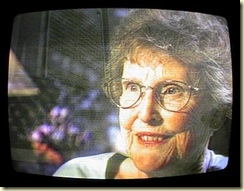 “I just hope I can do justice to her story,” he said from his New York office.
“I just hope I can do justice to her story,” he said from his New York office.
“This all makes me feel rather humble,” Daphne said. “I'm overwhelmed by the attention. I think my children are getting more of a kick out of this than I am. They think it's wonderful.
“I just think people are going to get sick of hearing about me,” said Daphne. “There's nothing special about me. I'm just one of the many.”
The Story Behind the Story
Daphne Cavin first phoned me sometime shortly after Christmas, 1997. She explained that a group of French students from Zionsville, Ind., had visited the grave of her first husband, Raymond Kelley, during a class trip to France the previous spring. She had been hoping for a small story in her local newspaper, The Lebanon Reporter, to recognize the Zionsville kids for their thoughtful gesture in memory of the only Boone County serviceman believed buried in the Allied cemetery at Epinal.
She had been in touch with a young reporter named Danielle Gates, a granddaughter of Mamie Gates, who had introduced Daphne and Raymond back in the summer of 1941. She gave Danielle some of the photos taken by the Zionsville student group and waited for the story to appear. Finally, late in 1997, Danielle left the Lebanon paper for a newspaper job in Kokomo, Ind. She hadn't written the story and she didn't return the photos. It was clear she'd blown Daphne off.
“Do you think this would make a story?” Daphne asked me on the phone that winter afternoon.
I turned the thing over in my mind. The pictures from the cemetery visit were now more than six months old. We'd lost our news peg upon which to hang any story about the Zionsville kids. I had no idea where this story was going and how I could make the Metro North reader believe it was news. We weren't close enough to Memorial Day or Veterans Day for a seasonal tie-in, but I felt there was something here. I wanted to hear Daphne's story.
I finally got to Lebanon to meet Daphne around the first week of February. She welcomed me into the home she shares with her daughter and granddaughter and we sat down at their dining room table to go through her scrapbook. It only took about a minute for me to realize that the Zionsville kids weren't the story. Daphne was the story.
I was at once fascinated and charmed by this woman and her love for both of her husbands. I was honored when she told me of the dream around the time of Raymond's death when he came to her and wordlessly comforted her, especially when she said she'd never told anyone else about that dream, not even her children. She asked me not to mention the dream in my story.
A few days later, as I wrote the story, I realized I had to mention the dream. I phoned Daphne and asked permission to include it. Her acquiescence was as good as getting a raise.
I was humbled to learn that much of what Daphne shared with me that afternoon, she had never told her own children. I worried that they might be upset seeing this stuff in print and Daphne wisely had the same concerns. Over the next day or so, she spoke with her two sons and two daughters and told them all the things she had never before mentioned about her first love. I like to think our interview helped bring her family a little closer together and gave her children and grandchildren a deeper appreciation of this remarkable woman.
My greatest disappointment about my story is that it never ran in the regular editions of The Star & The News, appearing only in a section that goes to the three north suburban counties of the Metropolitan Indianapolis area.
Even so, I know Daphne was very pleased with the story. She called me several times after it ran to thank me and to say how many people – old friends and complete strangers – had mentioned seeing it.
So when I learned Tom Brokaw was interested in Daphne's story, I was delighted. I was invited to the taping at Daphne's home. I was pleased to see producer Eric Wishnie had the same respect for her story as I. Eric and his crew spent about seven hours working with Daphne and her family and, when the final product aired three nights later, it was clear that Eric had truly connected with Daphne and crafted a wonderful story that her family will treasure forever.
Some writers feel territorial about stories like this. But, as I told Eric, this is really Daphne's story and we're just taking turns telling it. I'm honored to have had the chance to share this woman's humanity with my readers.
The Saga Continued:
Daphne gets four pages in a #1 bestseller
Daphne's story is in Brokaw's book
By John M. Flora
STAFF WRITER
LEBANON, Ind. – This has been a year of celebrity and a year of healing for Daphne Cavin.
The spotlight of public attention fell on the 79-year-old Lebanon woman last February when the Metro North section of The Star and The News carried the poignant story of her short-lived wartime marriage to Raymond Kelley.
The attention intensified when the Metro North story came to the attention of NBC Nightly News anchor Tom Brokaw, leading to Daphne being featured in a Nightly News “Home of the Brave” segment. Brokaw came to Indianapolis to attend the Memorial Day dedication of a World War II veterans monument with Daphne.
He also included her in his new book about the World War II generation, The Greatest Generation. The book, released in time for the 1998 Christmas market, is leading several best-seller lists.
Raymond Kelley left his young bride a widow when he died in September 1944. A private first class in the 45th Infantry Division, Kelley was killed by an artillery shell burst as his unit prepared to take the town of Mancrenans in southern France. Daphne kept a scrapbook of mementos of her time with Raymond, but gave it to her sister for safekeeping in 1950 when she married Marvin Cavin, a Boone County farmer. She and Marvin had four children – daughters Janie and Nancy and twin sons Oren and Loren. They were looking forward to Marvin's retirement in 1974 when he was diagnosed with cancer. He died in March 1975. Soon after Marvin's funeral, Daphne learned her second husband's death re-qualified her for Raymond's World War II survivor's benefits.
“I could hardly believe it. There I was at the age of 55 having to make my own living again,” she said, adding the unexpected benefit started at about $200 a month and now is more than $800 a month. “I guess you could say that Raymond is still taking care of me after all of these years,” she said.
Before she shared her story with a Metro North reporter, Daphne hadn't told her children much about her first marriage. “I might have made a mistake not telling my children much about Raymond, but I didn't want it rubbed in on my children. I didn't talk to them about it because of their feelings for their dad.”
“When the story came out, it made me realize that they really were interested in it,” she said, adding that talking about Raymond eases the pain she still feels. “I can talk about it now, whereas five or six years ago I couldn't,” she said. “I realized I can open up and let all those feelings out.
“Five or six years ago, I would have had problems reading this book,” she said, holding the personal copy she received from Brokaw. While she likes the book, which uses four pages and five pictures to tell her story, she observed, “There are a few salty words in it. I'm kind of naive. I'm just not used to that.”
The frontispiece of the book bears the hand-written inscription: “Daphne, I loved telling the story of your first love. Tom Brokaw”
“This has been a really nice lift for her at this point in her life,” said daughter Janie Strawmyer, who is understandably proud of her mother's unexpected fame. “She takes it really humbly because other people have suffered a lot of hardships in their lives too. She stayed strong through her life and has been a good example for us children. Her faith keeps her going and I see that in my life, too.”
Daphne may return to network television in January. NBC producer Eric Wishnie, who produced Daphne's “Home of the Brave” segment in May, said NBC plans an hour-long documentary featuring eight or ten characters from Brokaw's book. He said there is a chance some of the footage from his piece on Daphne will be included. The special is scheduled to air Jan. 15, he said.
New York Times reviewer
Finds Daphne's story
“Most moving” in book
Michael Lind, Washington editor of Harper's Magazine and a senior  fellow at the New American Foundation, reviewed The Greatest Generation in the Dec. 27, 1998, New York Times Book Review.
fellow at the New American Foundation, reviewed The Greatest Generation in the Dec. 27, 1998, New York Times Book Review.
He takes exception with some of Brokaw's historical conclusions but writes, “Perhaps the most moving story is that of Daphne Cavin, a beautician in Lebanon, Ind., whose husband, Raymond Kelley, went to war only months after their marriage and was killed in France in June 1944 at the age of 22...”
Brokaw's Best Seller Links Daphne
With A Buddy Who Was There
When Raymond Was Killed
This story appeared in The Indianapolis Star
On Christmas Eve, 1999
By John M. Flora
STAFF WRITER
LEBANON, Ind. – Daphne Cavin, whose story of young love cut short by World War II was included in Tom Brokaw's best-selling The Greatest Generation, is sleeping easier now.
Daphne, 80, had only been married to Raymond Kelley 26 months when he was killed in action in September, 1944. A private first class in the 45th Infantry Division, Kelley was killed as his unit prepared to take the town of Mancrenans in southern France.
With only the terse War Department telegram and a letter from her young husband's sergeant, Daphne knew precious little about the circumstances of Kelley's death. She pushed it to the back of her mind through a second marriage and the raising of four children, but the ache of not knowing how her first love died was always there.
Second husband Marvin Cavin died of cancer in 1975. Shortly after his death, she retrieved a scrapbook of her life with Kelley that she'd given to her sister for safekeeping when she married Marvin in 1950. As she turned the pages and gazed at the photos of that young red-haired Lebanon beautician and her handsome soldier, the memories flooded back. But until this month, she never knew the details of how she became a war widow. “I'd always wondered how he felt about being over there, whether he was unhappy or felt alone,” she said.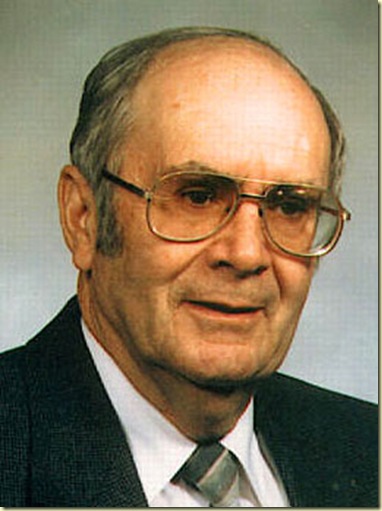
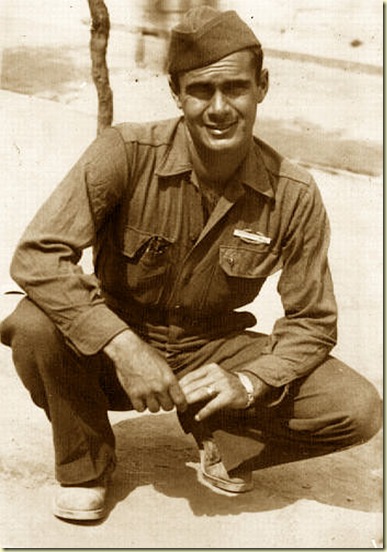
A.C. Clark today and as a combat rifleman in Italy in 1944.
Then, three weeks ago, she got a letter from A.C. Clark – forwarded to her by Brokaw's staff. Clark, 77, Cookeville, Tenn., wrote to Brokaw to thank him for writing The Greatest Generation and wondered if Daphne would like to talk to one of her husband's buddies who was on patrol with him when he was killed. Daphne called Clark at his home about 80 miles east of Nashville the afternoon of Dec. 10.
“I'd always wanted to contact her,” said Clark, a retired agricultural extension service agent who also served two years as Tennessee commissioner of agriculture. “But I figured that maybe she'd married again and I didn't want to disrupt anything and bring back old memories. It was a good many years before I felt like I wanted to talk about all these things myself. I was sorry I didn't get in touch with her, but I just didn't know what to do about it.”
Clark said he was leafing through a friend's copy of The Greatest Generation when “there was Raymond's picture. It just fell open there.”
“I thought, ‘Here's a fellow I was with when he got killed.’ I got to thinking I would like to tell her what I knew. I wondered if she knew how he died,” he said.
Clark remembers it was a warm sunny day as he and Kelley were among 35-40 men in two platoons deployed on a hillside. The men of the 45th Division were pushing up the Rhone River valley as the Germans fought a delaying action. The G.I.s were spread out, about 15-20 feet apart, keeping an eye on the ridge above them where they thought the enemy might be waiting.
Just then, Clark said, “This German half-track came around the bottom of the hill and sprayed the hillside with machine gun fire. We thought they would be up on the ridge and everybody was looking the other way. They came through about 15-20 mph and just sprayed the hillside and kept on going.”
Clark thinks the Germans may have been cut off by the advancing American troops and were making a dash for their own lines. “The thing that always stuck in my mind was seeing Raymond lying there when we had just been talking 30 minutes before,” he said.
“I remember seeing Raymond's wedding ring on his finger and I wondered if the Graves Registration Service would ever get it back to his family,” he said. “I have no idea who was standing there with me, but he said, ‘Should we take it?’
“But we decided we might be in his shape tomorrow and we'd lose it for sure then if it was sent back to our folks and they wouldn't know whose it was,” he said. Clark said he'd known Kelley about three or four months, having met the Boone County soldier when the 45th Division was fighting in Italy.
“He was a fine man and I told her this,” he said of his first conversation with Daphne. “I didn't know whether she knew this, but they were after some of us older PFCs to take a promotion to staff sergeant and take over a platoon.”
“Most of us felt like we didn't want the responsibility,” he said, recalling a popular expression about the hazards of being a leader: “Staff today, stiff tomorrow.”
“Raymond had decided to take a platoon, but his sergeant rank didn't come through in time,” he said. “He was to be made a staff sergeant the day after he was killed.”
That was an important detail for Daphne, who recalled Raymond came to her in a dream about the time he was killed. Without speaking, she said, he took her into his arms and held her as if to comfort her.
“I can remember feeling his hands on my back,” she said, recalling she was confused because he was dressed as an officer in the dream. She said she got a little chill when Clark told her about Kelley's impending promotion. Even though a sergeant is not an officer, she said, Kelley's appearance in the dream did suggest a promotion.
Clark saw his share of death in 180 days of combat. “I got to looking last night in my 45th Division History at the list of people who were killed and I counted a little over 100 men I knew personally,” he said, adding Raymond Kelley was one of just a few he felt he knew well.
“From the time I started with the outfit in Italy until I left it in France, their mailman told me over 1,000 men went through our 180-man company,” he said. “They didn't want you to get too close to the other men. It just hurt that much worse when they got killed.”
Daphne said her conversation with Clark feels like an early Christmas present. “I feel at peace,” she said. “For 56 years I had wondered if he was staying happy like he always was at home, if the Germans got his body... And I just thought it would be so wonderful if I could just talk to somebody who knew him over there.
“Then, all of a sudden there's this book and Mr. Clark read the book and all of a sudden, I've done it,” she said. “I feel a completeness that I just can't describe. I feel more at peace than I ever have.”
Daphne's Story Helps Other War Widows
Get Long-Overdue Survivor Benefits
By John M. Flora
STAFF WRITER
There's no doubt The Greatest Generation struck a resonant chord. The book was number 2 on this week's New York Times best seller list for hardcover non-fiction after 53 weeks on the list. It also spawned a second volume of stories, published this month by Tom Brokaw under the title The Greatest Generation Speaks.
 The new book, which premiered at number 5 on this week's New York Times best seller list, grew out of letters written by readers of last year's book. Brokaw said he was unprepared for the avalanche of letters and responses touched off by The Greatest Generation.
The new book, which premiered at number 5 on this week's New York Times best seller list, grew out of letters written by readers of last year's book. Brokaw said he was unprepared for the avalanche of letters and responses touched off by The Greatest Generation.
“I had written a book about America and now America was writing back,” he said.
Brokaw's homage to the World War II generation changed Daphne Cavin's life and touched innumerable others. Besides putting her in touch with a Tennessee veteran who was there when her husband was killed in combat, the re-telling of her story in The Greatest Generation has let her help other war widows.
It's a poignant fact that, although he died 56 years ago, Raymond Kelley is still taking care of his bride through his survivor benefits.
When Daphne married Marvin Cavin in 1950, she stopped receiving benefits. When Marvin died in 1975, she learned through a friend that she was once more eligible to receive Raymond's survivor benefits.
“I could hardly believe it. There I was at the age of 55 having to make my own living again,” she said. The payments started at about $200 a month and now amount to $861 a month.
Several of Brokaw's readers noticed that detail and contacted Daphne for more information. Among those inquiring was Jeannette Gagne Norton, another war widow whose story is in The Greatest Generation.
“I told her how to apply,” Daphne said. “It didn't take too long – a month or so – and she called me back and said, ‘I just got my first check’”
“You don't have any idea how much that helped me,” said Norton, who lives in a suburb of Minneapolis.
“I'd been living on my second husband's Social Security and was just squeaking by. If it hadn't been for her (Daphne's) story, I never would have known.” Norton's husband PFC Camille Gagne was in the 82nd Airborne Division. He survived combat in Italy and D-Day in France, but was killed defending the Nijmegen bridge in the ill-fated Allied invasion of Holland.
Shipped overseas two weeks after their son, Robert, was born, he died without ever seeing his child. Her second husband, William Norton, died in 1993. Last March, she said, she received a “huge check” representing a retroactive payment of benefits and monthly checks that will increase to $881 in January. Daphne said there have been other similar contacts. ``Another woman in Virginia who read the book, got my number from ‘information’ and called me about the benefits and, when she got her first check, she wrote back to tell me,” she said.
“It just makes me feel good to know my story is helping people.”
Everything changed today
Palin is a brilliant choice. This more than makes up for Dan Quayle.
OK, I was wrong

Earlier this year, I predicted at least one of the vice-presidential candidates would be from Indiana.
As of today, I am officially wrong.
I had hoped John McCain would pick Indiana Gov. Mitch Daniels as his running mate. I still think Mitch would be more of an asset than Sarah Palin.
We all know why Palin is on the ticket. The majority of the women who are pissed off because Hillary got cheated out of the nomination just got a huge reason to desert the Democratic Party and vote for McCain.
I was closer with my Democrat VP pick - Indiana Sen. Evan Bayh. As it turned out, Bayh was on the very very short list, like the #2 choice behind Joe Biden. If Oama weren't so short on age and experience, Bayh would have been a no-brainer for veep. But the Democrats needed somebody with real credentials on the ticket, so Evan gets to wait another four years and maybe run with Hillary because McCain is gonna beat the Obama-Biden ticket like a rented mule.
Thursday, August 28, 2008
IE8 Beta 2 - a first look
The Beta 2 version of Internet Explorer became available for download yesterday - it's the one that supports Service Packs 2 and 3 of Windows XP.
I downloaded and installed it this afternoon and am still ascending the learning curve for the new features and can't say much about them at this point.
But I can say it crashes every time I try to access my Favorites (bookmarks). Fortunately, I installed Delicious while Morgan was here and can still access my bookmarks through that path.
And I can no longer see the content of the Flickr.com Badge gizmo on the right side of this page.
The installation process for IE8 notified me that my Google toolbar would not transfer and asked if I wanted to to get a newer version. I checked the "no" box and soon regretted it. I find it hard to deal with the Internet without Google. Windows Live Search is OK as far as it goes, but Google is my choice.
I heard recently on a Leo Laporte podcast that half of all Internet users use a search engine at least once a day.
Half? That seems like an ultra-conservative estimate. But then I'm a geek and my Internet habits are probably different from a lot of the population.
More on Barack's half-brother in Kenya
The Times published this followup story on Barack Obama's half-brother by Rob Crilly on Aug. 22. It paints a somewhat less bleak picture of George Obama's life.
The muddy lanes and rickety shacks of Huruma slum are known for their poverty, disease and outbreaks of gang violence — but for Barack Obama’s half-brother it is the place he calls home.
Yesterday, as the Democratic nominee moved ever closer to the White House, George Hussein Onyango Obama, the youngest of his halfsiblings, responded to claims that his family had abandoned him by insisting that he was content with life in a simple wooden hut.
“Life in Huruma is good. In other places you must lock yourself in to keep yourself safe,” he told The Times. “Here I am surrounded by friends and family and feel safe and secure.”
His home stands beside a dirt road that had turned to mud after a night of rain. Nearby, women fried spicy potato bhajis in vats of bubbling oil as the smell of rubbish wafted through the streets. Not far away six people were hacked to death during the political violence that rocked Kenya earlier this year. George, 26, had been living a quiet life, studying to become a car mechanic until earlier this week when Vanity Fair tracked him down to Huruma, on the edge of Nairobi.
He said that he was furious at subsequent reports that he had been abandoned by the Obama family and that he was filled with shame about living in a slum. “It seems there are people who want to destroy me and my family,” he said.
“They say I live on a dollar a month, but this is all lies by people who don’t want my brother to win.” He said that he was supported by his mother, Jael, who now lives in the US, and by a cousin in Huruma.
The Obama family in Kenya watched with dismay as the campaign in the US turned increasingly negative. Reporters have tried to prove that Barack Obama is a secret Muslim and have tracked down friends of his father, portrayed as a drunk and abusive husband.
Now they are worried that a careless comment in Kenya could have repercussions thousands of miles away. George is the youngest of Barack’s seven half-brothers and sisters. He was born to Barack Obama Sr’s fourth partner, six months before his father died in a car crash.
Yesterday, over a simple lunch of barbecued goat and fistfuls of thick maize porridge, George admitted that he knew little about his famous half-brother. “People keep asking questions, but I have met him only twice and I can’t speak about what kind of man he is,” he said.
“Many people don’t know about my connection,” he continued, dipping a greasy hunk of goat in salt before popping it into his mouth. “If people ask about my name I tell them we are not related. The problem here is that people have expectations and think I would look after them.” Kenyan politics is synonymous with corruption and MPs are expected to shower cash and development projects on their home villages.
George said he expected no favours and wanted to work for a living, even though he was confident that his brother would be moving into the White House. “He has already done so many firsts, as black president of the Harvard Law Review and getting the nomination, so we believe he will win,” he said.
That means the half-brothers and sisters, and the countless cousins, uncles and aunts that make up the Obama family will have to get used to being in the media spotlight.
Wednesday, August 27, 2008
Meet Barack's little half-brother
This story by Nick Pisa was posted on the London Telegraph website on Aug. 21.
The Italian edition of Vanity Fair said that it had found George Hussein Onyango Obama living in a 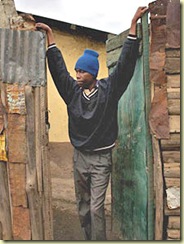 hut in a ramshackle town of Huruma on the outskirts of Nairobi, Keyna.
hut in a ramshackle town of Huruma on the outskirts of Nairobi, Keyna.
Mr. Obama, 26, the youngest of the presidential candidate's half-brothers, spoke for the first time about his life, which could not be more different than that of the Democratic contender.
"No-one knows who I am," he told the magazine, before claiming: "I live here on less than a dollar a month."
According to Italy's Vanity Fair his two metre by three metre shack is decorated with football posters of the Italian football giants AC Milan and Inter, as well as a calendar showing exotic beaches of the world.
Vanity Fair also noted that he had a front page newspaper picture of his famous brother - born of the same father as him, Barack Hussein Obama, but to a different mother, named only as Jael.
He told the magazine: "I live like a recluse, no-one knows I exist."
Embarrassed by his penury, he said that he does not mention his famous half-brother in conversation.
"If anyone says something about my surname, I say we are not related. I am ashamed," he said.
For ten years George Obama lived rough. However he now hopes to try to sort his life out by starting a course at a local technical college.
He has only met his famous older brother twice - once when he was just five and the last time in 2006 when Senator Obama was on a tour of East Africa and visited Nairobi.
The Illinois senator mentions his brother in his autobiography, describing him in just one passing paragraph as a "beautiful boy with a rounded head".
Of their second meeting, George Obama said: "It was very brief, we spoke for just a few minutes. It was like meeting a complete stranger."
George added he was no longer in contact with his mother and said:"I have had to learn to live and take what I need.
"Huruma is a tough place, last January during the elections there was rioting and six people were hacked to death. The police don't even arrest you. They just shoot you.
"I have seen two of my friends killed. I have scars from defending myself with my fists. I am good with my fists."
Back in May, 2007, Barack Obama reported assets of between $456,000 and $1.1 million. He and his wife had total income of $984,000 in 2006, including $567,000 in royalties for two books he has written. In 2005, Obama received a $1.9 million book advance.
At the risk of sounding like a bleeding-heart liberal, if I had that kind of financial resources and knew I had a half-brother living in abject poverty in the Third World, I'd give the guy a hand. Wouldn't you?
More culture shock
 I was gassing my Honda del Sol with $3.29/gallon regular at Sam's Club this morning - getting the last of the comparatively cheap gas before Hurricane Gustav churns into the Gulf of Mexico this weekend and runs the price of oil up again.
I was gassing my Honda del Sol with $3.29/gallon regular at Sam's Club this morning - getting the last of the comparatively cheap gas before Hurricane Gustav churns into the Gulf of Mexico this weekend and runs the price of oil up again.
A woman pulled up to a pump off to my left, spied a friend fueling her SUV nearby and hailed her with that hideous, grating, ear-splitting Southern woman greeting:
"HowrYeeeeeeeeeewwwwww!"
If I live in Arkansas for 100 years, I will never, ever get used to that over-enthusiastic, falsely cordial screech of a salutation.
The only thing worse is when the other woman replies in kind.
An anniversary
Seems like only yesterday.
Present and future bikers
Our next-door neighbors have two boys - one about 3 and the other born last winter.
They had a visitor on a big Harley-Davidson over the weekend who parked his bike in their driveway. The little guy parked his bike next to it and Maria couldn't resist shooting this photo.
Free CD/DVD burning software
I mowed the lawn yesterday and learned something quite unrelated to  lawn mowing.
lawn mowing.
Whenever I climb aboard the John Deere LA125, I do so with iPod and earplug speakers. Sometimes I listen to music, other times it's podcasts. Yesterday it was Windows Weekly with Leo Laporte and Paul Thurrott.
The software tip was CDburnerXP, a free CD/DVD burner program from Sweden that is a great replacement for the bloated, trying-to-be-everything-to-everyone software packages that Roxio and Nero have become. And it's FREE!
You can find it at http://cdburnerxp.se/
I downloaded it to my desktop computer and also to Maria's and it works beautifully. Here's what it does.
Create Data-CDs/DVDs
- burn any Data on CD-R/CD-RW/DVD+R/DVD-R/DVD+RW/DVD-RW/DVD-RAM/BD/HD-DVD, including double layer mediums
- burn mp3-CDs to store many audio files on one single disc
- create bootable discs
- verify written Data automatically after burning process
- use either the internal browser to add your files or the intuitive Drop-Box to drag and drop files directly from any Windows Explorer window
- save your compilations for creation of backups
- burn on-the-fly and with buffer-underrun protections
- import previous (ISO 9660) sessions and edit existing file structure on CD/DVD
- quick- and full-erase disc
- copy data discs (possible copy-protection is not bypassed)
- retrieve recorder and disc information
Create Audio-CDs
- create Audio-CDs from mp3, wav, ogg, flac and wma files
- add single or multiple tracks from existing audio-CDs directly to your new compilation without ripping tracks before (add cda-files)
- play audio-files with integrated audio player
- gapless audio-CDs supported (disc-at-once-mode)
- import M3U or WPL playlists
- support for ReplayGain
- import CUE sheets
- create mixed-mode discs
ISO features
- burn ISO files to CD
- create your own ISO files
- convert bin- and nrg-files to ISO
- save CDs/DVDs as ISO file to disc
Other features
- simple cover printing feature for data- and audio-discs
- LightScribe integration
- Command line version
- supports most IDE, USB, Firewire and SCSI drives
- integrated option to enable access to drive for restricted users
- multi-language interface
- online update
Tuesday, August 26, 2008
I ♥ Goobertown
We were heading home from lunch and shopping in Jonesboro when we overtook a pickup truck on U.S. 49 with an "I ♥ Goobertown, Arkansas" bumper sticker on the back.
Goobertown is just a couple of miles north of us and I like to say we live between Goobertown and Buck Snort, Ark.
Naturally, we had to have one or two, so we set out to find the source. After trying an antique store that was closed, we realized the only other possibility was the Goobertown Grocery.
We'd seen so little activity around the grocery that we guessed it wasn't an active business, but just somebody's home.
Here's the couple who live and work at the Goobertown Grocery and make a living selling a modest inventory of grocery items and souvenirs, including the bumper sticker we'd seen about an hour earlier.
And here's Morgan at the Whole Hog Cafe. She's not really that messy - the barbecue sauce on the napkin and her face were added for effect.
Monday, August 25, 2008
This morning's tally: 275 confirmed kills
My mid-morning patrol of the screened porch resulted in 275 confirmed mosquito kills. The actually count is probably more than 300, but I actually observed 275 mosquitos going up the pipe.
They congregate in the corners near the floor and ceiling and when I swirl the wand into their midst, several get sucked in faster than I can count. I also got a handful of moths, flies, horseflies and spiders.
If we can train the dogs not to scratch at the screen porch door, we could keep it closed and spare the insect world all of this carnage, but the door will remain propped open until that day.
Sunday, August 24, 2008
Pineapple Express - ho hum
We drove down to the Malco Theatre on Highland this afternoon and saw Pineapple Express.
It was amusing, but formulaic and somewhat predictable. One time through is enough. i don't care to have it on DVD or see it again.
Casualty list from The Indianapolis Star
This is the email sent out by the Indianapolis chapter of the Newspaper Guild concerning layoffs at The Indianapolis Star - a consequence of Gannett's financial problems:
Back to Beale Street
We concluded that Silky O'Sullivan's on Beale Street in Memphis is weak on food, but strong on music.
We took Morgan to Beale Street yesterday and went to Silky's for what turned out to be a very forgettable lunch. Maria and Morgan split an order of ribs that Maria said were inferior to what she's had at the Whole Hog Cafe in Jonesboro. I ordered the Cajun burger with onion rings. I couldn't detect any Cajun spices in the burger and the onion rings were exceptionally bland.
After cruising the street and finding some live blues in the Pepsi Pavilion where Morgan danced with a kid who was part of a group of mentally handicapped people, we drifted back up the street toward B.B. King's place.
We watched a couple of kids turning handsprings in the street for tourist dollars, then noticed music coming from the Silky O'Sullivan's patio.
We found a table where we could watch the musicians and observe the two goats that make Silky's unique and passed the next couple of hours drinking beer and soaking up the blues.
We were running out of energy and money about 5 p.m. at a time when Saturday evening activities were just starting to pick up and left with the realization that we got there way too early. It'll be a night trip next time.
Saturday, August 23, 2008
Friday, August 22, 2008
Frohe Geburtstag, Leni!
Today is Leni Riefenstahl's birthday. She was born on this date in 1902 and died Sept. 8, 2003 at the age of 101.
She was a truly liberated woman.
Getting organized
My stepdaughter Morgan, who is working on her master's degree in library science and has a natural penchant for organization, has got me hooked on Delicious.com.
It's a free web site where you can import your browser bookmarks, organize them with key search words and, if you like, share them with an ever-growing community of Delicious.com users.
I've spent the last couple of hours playing with it and have to admit that it's kind of addictive.
Thursday, August 21, 2008
Enjoying the Olympics? Thank Leni.
Okay, so somebody else probably would have figured it out if she hadn't, but Leni Riefenstahl pretty much invented sports cinematography.
Much of what we've seen in TV coverage of the Beijing Olympics involves camera techniques that Riefenstahl developed for shooting 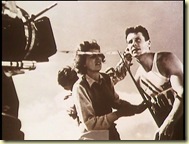 Olympia, her epic film of the 1936 Berlin Olympics.
Olympia, her epic film of the 1936 Berlin Olympics.
And yes, this is the same Leni Riefenstahl who created Triumph of the Will, the premiere Nazi propaganda film working under a direct commission from Adolf Hitler.
She was unquestionably the most talented woman director of the 20th century, but her deal with the devil wrecked her chances for a post-war career.
Even so, she took up still photography, lied about her age to take up scuba diving in her 80s, did amazing photographic work with African tribes and lived to be 101. 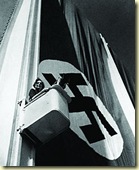
Riefenstahl pioneered in the area of the moving camera and innovative shooting angles.
If you were impressed with the shots of the track events in the Bird's Nest from the camera pod that followed the runners down the track, know that it's a refinement of what Riefenstahl was doing in '36.
Ditto high angle elevator shots. And low 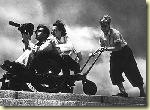 level track and field shots - she had camera pits dug in strategic places in the Berlin Olympic Stadium for her cameras.
level track and field shots - she had camera pits dug in strategic places in the Berlin Olympic Stadium for her cameras.
So, after the Beijing Olympics are over, see if you can track down a copy of Olympia. It's conspicuously absent from the Netflix lineup, but you can get it on DVD from Amazon.com for as little as $14.99.
19-Cent Saturday matinees at the Roxy Theatre
I've been reliving my fourth grade Saturday afternoons, thanks to Netflix and the DVD version of the 1943 Batman movie serial.
This serial was 10 years old by the time I saw it over several successive Saturdays at the Roxy Theatre in downtown Delphi, Ind.
My friends and I thought it was ultra cool. It looks silly and cheesy now, especially when you compare the costumes with the state-of-the-art stuff featured in the latest Batman film.
 The serial has Batman and Robin acting as special FBI agents combating a WWII Japanese spy ring. Veteran character actor J. Carroll Naish, who earlier played the lead character in the Charlie Chan detective movies, is Dr. Tito Daka, the evil spymaster.
The serial has Batman and Robin acting as special FBI agents combating a WWII Japanese spy ring. Veteran character actor J. Carroll Naish, who earlier played the lead character in the Charlie Chan detective movies, is Dr. Tito Daka, the evil spymaster.
Daka operates out of a carnival funhouse and his secret lair includes a huge statue of the Buddha, an incongruity that was apparently lost on American audiences of the 1940s.
The Batman, as he is called, and Robin manage to get into big brawls in ever episode in which they are outnumbered and overmatched and generally get their asses kicked, ending the episode with a suspenseful cliff-hanger situation. Watching it now, it's hard not to see Batman and Robin as Halloween costumed morons who have absolutely no judgment when it comes to picking their fights.
And there are plenty of racist remarks that are hideously politically incorrect by today's standards, including a narrator's rant about what a great thing it was to round up all of the Japanese citizens and put them into internment camps for the duration.
But then it's just entertainment, isn't it?
Company's coming
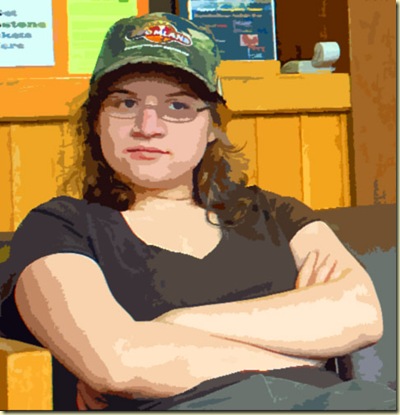 Maria's daughter Morgan is on her way from Bloomington, Ind. to our house as I type. I hope she brings her Boomland hat.
Maria's daughter Morgan is on her way from Bloomington, Ind. to our house as I type. I hope she brings her Boomland hat.
Why Ebay shoppers can make me crazy
Because we need the money and the garage space, I'm liquidating my somewhat pointless collection of East German military uniforms on Ebay.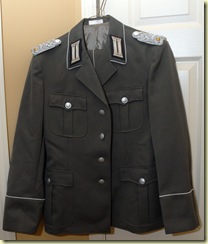
The first set of auctions closed on Tuesday morning and I discovered the buyer of this East German Army major's uniform lives in Beijing, China. I turned away one bidder from Brazil and I had specified "No International Sales" in the auction because I don't like the hassle of shipping outside the U.S.
I got an email from the buyer yesterday asking if I would ship the purchase to an address in Washington, D.C. Of course I will. I sent him an invoice with a $15 shipping charge. I could have shipped it in a $12.95 large flat rate box, but the tunic and trousers won't fit in the box. So I chose a larger Priority Mail box which will cost more to mail.
So this morning, I had this email exchange:
Buyer: Excuse me, I found that the postage from Brookland to other states is $12, and I don't understand why it go up to $15? Would you mind choose a cheaper way that posted to my friend. Thanks! By the way, have you has other uniforms?
Me: I have shipping and handling costs over and above the postage - I add delivery confirmation to assure the package reaches its destination, plus the cost of packing tape and other materials, plus fuel cost for the 5-mile round trip to the post office. That said, I will reduce your shipping cost to $13.
And, yes, I have more uniforms. I listed more items yesterday.
Buyer: ok, I will wait for your other uniforms, if I like I will choose more, will you combine shipping cost? thanks
(By this time, I'm getting tired of screwing around with this guy and am realizing that he's working me.)
Me:Sorry, but no. I will combine shipping on items that close within the same 24-hour period, but I cannot wait for a 7-day auction to close to maybe/maybe not add another item to the order.
Please pay for this item now and I will ship it today to the Washington address you provide.
Buyer: ok, pls give me a new bill that postage is $13, I will pay it when I receive it. thank you!
I sent him a revised invoice, taking $2 off of the shipping cost, he paid by Paypal and his purchase goes to the Brookland Post Office later this morning. All that for $2.
Wednesday, August 20, 2008
Internet Exploder v7
 My Internet Explorer browser has gone wonky on me - freezing and crashing.
My Internet Explorer browser has gone wonky on me - freezing and crashing.
I tried a reboot, but it didn't help.
I'm using IE7 and I'd heard that the Beta version of IE8 is available from Microsoft's web site. Unfortunately, the site stipulates that it only runs under the Service Pack 2 version of Windows XP and I've already updated to Service Pack 3.
Fortunately, I also have Firefox version 3.0 on my computer, so I guess I'll just use that until IE8 is released. Or maybe I won't go back. Who knows?
Blowin' in the wind
The Smoky Hills Wind Farm wasn't there when I rode east on I-70 through central Kansas last Sept. 3.
So imagine my surprise on the afternoon of July 25 when I saw acres  and acres of 260-foot-tall wind turbines arrayed along the north side of the interstate about 25 miles west of Salina.
and acres of 260-foot-tall wind turbines arrayed along the north side of the interstate about 25 miles west of Salina.
It's the biggest wind farm I've seen since my first encounter with wind turbines back in the mid '90s west of Palm Springs, Calif.
The Smoky Hills project isn't expected to be complete until later this year. Phase 1, which consisted of 56 turbines on 10,000 areas of Lincoln and Ellsworth counties, went online in February. Phase 2 will take the wind farm's electricity generating potential from 100.8 megawatts to just under 250 megawatts - enough to power about 45,000 homes.
The Associated Press reported that Phase 1 construction employed between 225 and 250 workers.
Once complete, the AP reported last December, Smoky Hills would be the fourth wind farm in Kansas. The other three were cranking out 363 megawatts. Kansas wind farm projects being developed this year are expected to raise the state's wind power capacity to 900 megawatts, the AP said.
I noticed several trucks hauling the huge turbine blades as I rode north on I-25 from Kansas City last month and suspect they were headed for Smoky Hills or another of the wind farms under development in Kansas.
Given my motorcycling experience in Kansas, it makes sense to harvest the wind there. I can't count the number of times I've ridden up and down I-70, leaning into a strong crosswind.
They say you can see them from 20 miles away on a clear day. I don't recall how far away I was when I first noticed the big white turbines, but I was astonished at the scope of the project. I rode past turbines for miles and miles, cresting each hill to find a fresh vista of turbine towers marching off to the horizon.
It was an inspiring sight and I felt like I was looking at the leading edge of America's energy future.
The AP cited a report from the National Renewable Energy Laboratories that Kansas has the potential to produce more than 7,100 megawatts of wind energy, providing up to $7.8 billion in economic benefits, including 23,000 temporary construction jobs and 3,000 permanent jobs.
Even so, I found lots of stuff on the Internet from people violently opposed to the wind farms. Some arguments were based on aesthetics - complaints that the turbine towers ruin the view of the prairie. Others grumble darkly that Kansas landowners are being exploited by big evil corporations. None of them struck me as compelling.
TradeWind Energy, the company developing the Smoky Hills wind farm, says the completed project will have more than 120 landowners participating and collecting royalty payments from the turbines. They don't say how much the farmers will make and I'd still searching online for that information.
The turbines are spaced about 1,000 feet apart and counting all land for roads, turbine foundations and maintenance buildings, take only 1-2 percent of the farmers' land out of production.
TradeWind Energy says the project will offset about 450,000 tons of carbon dioxide emissions a year, 1,500 tons of nitrous oxide per year and 2,000 tons of sulfur dioxide a year.
Tuesday, August 19, 2008
Colorado
Native Coloradans (Coloradians? Coloradoites?) are hard to find here in the high country.
It seems everyone I meet is from somewhere else. My hosts, Tim & Linda, are from Indiana. The guy we had dinner with last night is from Vermont by way of upstate New York. Walter, who lives down the road, is from Germany (Wehrmacht vet of WWII).
A couple we know in Indiana has bought land a few miles from here and plans to move out. (They signed the papers to start construction last month.) Linda's daughter and her husband have their house up for sale and are job-hunting here. (Jeff and Sylvia have been living their Colorado dream for about three years now with a home a few miles from Tim and Linda's place.) This place is a huge magnet for flatlanders and the pull seems to be getting stronger by the day.
Development is creeping up U.S. 24 from Woodland Park. Frisco and Breckenridge are exploding with new houses and businesses and property values here in Alma, long considered the wrong side of the tracks/pass from upscale Breckenridge, are soaring.
When Maria and I were out here in May, 2004 we spent some time scouting real estate out in east of Jefferson in South Park. The views out there are spectacular, but I shudder to think about trying to get around in the winter and what an enormous hassle it must be to shop for groceries and other stuff.
There are probably a half-dozen places I've visited in my travels where I've thought, "Yes, I could live here and be very happy."
The Colorado high country is one of them. Big Sur is another. Portland, Ore., is yet another. Ditto, Taos, N.M.; Shelter Cove, Calif., and Frankfort, Mich.
But that's big talk coming from a guy who's spent the 59 years of his life in the same state, living within a 100-mile radius of the place he was born. I think I could make the jump but it will take some serious prodding to get me moving.
Maria loves it up here too and says she's more than ready to pull up stakes, sell our house and my late parents' place and head for the mountains.
But she's a Gemini and is perfectly capable of having two opposing opinions simultaneously. The opposing opinion, in this case, is her attachment to family.
Her parents live about 10 blocks up the street from us. Both of her brothers and their families are nearby. Between them they have five nephews and two (make that four) nieces that she dotes on and she gets way off balance if she has to go more than a couple of weeks without seeing those kids.
My nearest son is about three hours from my house (Steve and his family have left Cincinnati and now live in Las Vegas.) and the other is about 2,000 miles away, so I'm not habituated to frequent visits.
So here we are, four years downstream. We're out of Indiana, but we're living in Arkansas. I never would have believed it. Not sure I believe it yet.
14 states in 21 hours - no big deal
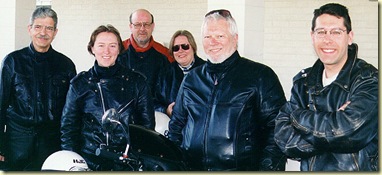
Dom LoDuca, Michelle Thorson, Archey and Theresia Shearer, me, and Bob Knutson moments before we embarked on our 14-state ride.

14 States in 21 Hours
By JOHN FLORA
 southwest corner of Indiana. Dom and I rode down together and were joined that evening by Archey and Theresia. Bob and Michelle rolled in a little later.
southwest corner of Indiana. Dom and I rode down together and were joined that evening by Archey and Theresia. Bob and Michelle rolled in a little later. Pennyrile Parkway. We turned west on the Western Kentucky Parkway and put the morning sun to our backs.
Pennyrile Parkway. We turned west on the Western Kentucky Parkway and put the morning sun to our backs. very bottom of Illinois and were soaring over the Mississippi. To our left we could see the point where the waters of America’s two greatest rivers meet and merge. A few miles into Missouri, we picked up the last 12 miles of I-57 before it terminates at I-55. Turning
very bottom of Illinois and were soaring over the Mississippi. To our left we could see the point where the waters of America’s two greatest rivers meet and merge. A few miles into Missouri, we picked up the last 12 miles of I-57 before it terminates at I-55. Turning  south onto I-55, we settled into the ride through the bootheel of Missouri. We paused for fuel and fluids near New Madrid, then followed Theresia south into Arkansas.
south onto I-55, we settled into the ride through the bootheel of Missouri. We paused for fuel and fluids near New Madrid, then followed Theresia south into Arkansas. the seductive aroma of hickory smoked barbecue lured us across the street to Ray’s. My pork barbecue sandwich, with sides of coleslaw, pinto beans and homemade potato salad, was pure culinary bliss.
the seductive aroma of hickory smoked barbecue lured us across the street to Ray’s. My pork barbecue sandwich, with sides of coleslaw, pinto beans and homemade potato salad, was pure culinary bliss. Mississippi River into Memphis. Never having been to Memphis, I was startled to see the sun blazing off a massive 32-story stainless steel pyramid near the river front. I later learned this is the Pyramid Arena, a sports and concert venue that seats more than 20,000 and stands taller than the Statute of Liberty or the Taj Mahal.
Mississippi River into Memphis. Never having been to Memphis, I was startled to see the sun blazing off a massive 32-story stainless steel pyramid near the river front. I later learned this is the Pyramid Arena, a sports and concert venue that seats more than 20,000 and stands taller than the Statute of Liberty or the Taj Mahal. Mississippi. Where I had expected U.S. 72 to be a leisurely two-lane road, we found it to be a mostly complete four-lane divided highway that invited us to rip along at 75 or 80 mph. We spent the rest of the afternoon cruising across northern Mississippi and Alabama before finally drawing rein just west of Huntsville at the home of club members Chris “Cookie Monster” Biddlecombe and his wife Kathy.
Mississippi. Where I had expected U.S. 72 to be a leisurely two-lane road, we found it to be a mostly complete four-lane divided highway that invited us to rip along at 75 or 80 mph. We spent the rest of the afternoon cruising across northern Mississippi and Alabama before finally drawing rein just west of Huntsville at the home of club members Chris “Cookie Monster” Biddlecombe and his wife Kathy. delightful evening basking in the warm southern hospitality of these transplanted Yankees.
delightful evening basking in the warm southern hospitality of these transplanted Yankees. border. We picked up I-24, which loops into Georgia for a couple of miles on its way to Chattanooga, so we let that suffice for our ninth state of the ride.
border. We picked up I-24, which loops into Georgia for a couple of miles on its way to Chattanooga, so we let that suffice for our ninth state of the ride. North Carolina. Traffic was fast and heavy as we worked our way through the mountain twisties. We soon found it impossible to maintain our staggered six-bike formation and strung out in a looser aggregation spread out over about a mile.
North Carolina. Traffic was fast and heavy as we worked our way through the mountain twisties. We soon found it impossible to maintain our staggered six-bike formation and strung out in a looser aggregation spread out over about a mile. northeastbound. It was a delightful break from the superslab. I remember passing a cemetery where every single grave was decorated with flowers and recalled how, to my parents, Memorial Day was “Decoration Day.” That was the day Mom would collect the huge peony flowers from the bushes in our yard. She put them into water-filled coffee cans and we would drive to the two rural cemeteries where her folks and Dad’s parents are buried, so as to decorate the graves.
northeastbound. It was a delightful break from the superslab. I remember passing a cemetery where every single grave was decorated with flowers and recalled how, to my parents, Memorial Day was “Decoration Day.” That was the day Mom would collect the huge peony flowers from the bushes in our yard. She put them into water-filled coffee cans and we would drive to the two rural cemeteries where her folks and Dad’s parents are buried, so as to decorate the graves. the cool air, we could look to our right and see miles and miles of farmland stretching off toward the Atlantic coast.
the cool air, we could look to our right and see miles and miles of farmland stretching off toward the Atlantic coast. Virginia-West Virginia state line lies somewhere within the tunnel.
Virginia-West Virginia state line lies somewhere within the tunnel. our group back in a tight staggered formation, I led the way across the bridge and into Ohio. We pulled over next to the “Ohio Welcomes You” sign for photos and high fives all around.
our group back in a tight staggered formation, I led the way across the bridge and into Ohio. We pulled over next to the “Ohio Welcomes You” sign for photos and high fives all around.
